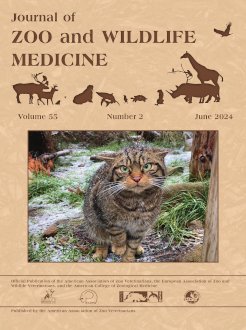The marbled crayfish (Procambarus virginalis) is a parthenogenetic invasive species across much of the world, and when found, euthanasia is often recommended to reduce spread to naïve ecosystems. Euthanasia recommendations in crustaceans includes a two-step method: first to produce nonresponsiveness and then to destroy central nervous tissue. Minimal data exist on adequate anesthetic or immobilization methods for crayfish. A population of 90 marbled crayfish was scheduled for euthanasia due to invasive species concerns. The population was divided into six treatment groups to evaluate whether immersion in emulsified isoflurane or propofol solutions could produce nonresponsiveness. Each group was exposed to one of six treatments for 1 h: isoflurane emulsified at 0.1%, 0.5%, 2%, 5%, and 15% or propofol at 10 mg/L and then increased to 100 mg/L. Crayfish from all treatment groups were moved to nonmedicated water after completion of 1 h and observed for an additional 4 h. All crayfish treated with isoflurane showed lack of a righting reflex at 5 min and loss of movement after 30 min. By 240 min (4 h), none of the crayfish from the isoflurane treatment groups regained movement. None of the crayfish in the propofol treatment achieved loss of reflexes or responsiveness, and all remained normal upon return to nonmedicated water. Isoflurane emulsified in water produces nonresponsiveness that is appropriate for the first step of euthanasia, while propofol was insufficient at these treatment doses.
How to translate text using browser tools
13 June 2024
EVALUATION OF IMMERSION IN EMULSIFIED ISOFLURANE OR PROPOFOL AS PART OF A TWO-STEP EUTHANASIA PROTOCOL IN MARBLED CRAYFISH (PROCAMBARUS VIRGINALIS)
Jessica Heinz,
Michael Wenninger
ACCESS THE FULL ARTICLE





